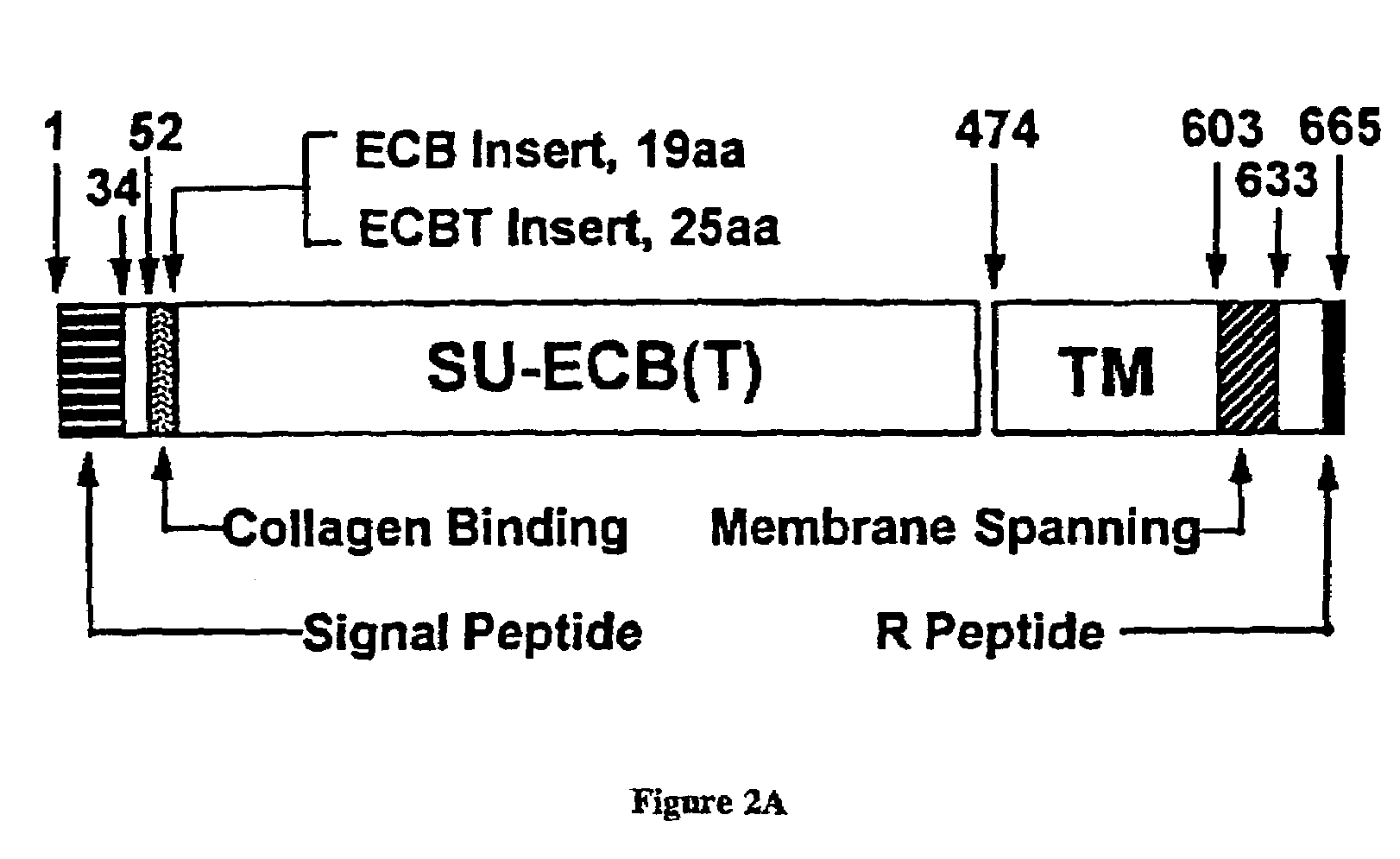Method of delivering therapeutic agents to site of tissue injury
a tissue injury and therapeutic agent technology, applied in the direction of viruses, vectors, fusion polypeptides, etc., can solve the problems of inability to replicate further, limited effectiveness of retroviral vectors for gene delivery to cardiovascular and other tissues, and difficulty in targeting the delivery of therapeutic genes to impaired, diseased, or transplanted vasculatur
- Summary
- Abstract
- Description
- Claims
- Application Information
AI Technical Summary
Benefits of technology
Problems solved by technology
Method used
Image
Examples
example 1
[0074]CEE+ is a CMV-env expression vector constructed by digesting CEE (Morgan, et al., J. Virol., Vol. 67, No. 8, pgs. 4712-472 1 (August 1993)) with HindIII and NotI, filling in the NotI site with a Klenow fragment, and ligating the CMV-env cassette into pBluescript II SK+(Stratagene, La Jolla, Calif) digested with SinaI and HindIII. PCR and recombinant DNA technologies then were employed to make the construct ECB-CEE+, which includes a polynucleotide encoding a chimeric Moloney Murine Leukemia Virus based gp70 envelope protein (SEQ ID NO: 1) that incorporates a high-affinity collagen binding domain (SEQ ID NO:3) within its primary structure (FIG. lA). The modified collagen binding domain (SEQ lD NO:3) was derived from a functional domain within von Willebrand Factor involved in the recognition of exposed vascular collagen sequences. (Takagi, et al., Biochemistry, Vol. 32, pgs. 8530-8534 (1992); Tuan, et al., Conn. Tiss. Res., Vol. 34, pgs. 1-9 (1996)). ECB-CEE+ incorporates a pol...
example 2
[0095]A major advantage of gene therapy over conventional pharmacological therapy for cardiovascular disease is the potential that transduction of vascular cells at specific sites will result in localized cellular effects and / or sustained levels of protein production in target vascular cells. (Feldman, et al., Cardiovascular Res., Vol. 32, pgs. 194-207 (1996); Gibbons, et al., N. Engl. J. Med., Vol. 330, pgs. 1431-1438 (1994).) Restenosis following vascular injury represents a leading target for cardiovascular gene therapy on the basis of its high incidence (Glagov, Circulation, Vol. 89, pgs. 2888-2891 (1994); Schwartz,et al., Am. Coll. Cardiol., Vol. 17, pg. 1284 (1992); Myers, Wound Healing Responses in Cardiovascular Disease, Weber, ed., Futura Publishing Co., Mt. Kisco, N.Y., pgs. 137-150 (1995)) and refractoriness to conventional approaches (Hermans, et al., Am. Heart J., Vol. 122, pgs. 171-187 (1991); Popma, et al., Circulation, Vol. 84, pgs. 1426-1436 (1991); Feldman, et al.,...
PUM
| Property | Measurement | Unit |
|---|---|---|
| pH | aaaaa | aaaaa |
| pH | aaaaa | aaaaa |
| Mn | aaaaa | aaaaa |
Abstract
Description
Claims
Application Information
 Login to View More
Login to View More - R&D
- Intellectual Property
- Life Sciences
- Materials
- Tech Scout
- Unparalleled Data Quality
- Higher Quality Content
- 60% Fewer Hallucinations
Browse by: Latest US Patents, China's latest patents, Technical Efficacy Thesaurus, Application Domain, Technology Topic, Popular Technical Reports.
© 2025 PatSnap. All rights reserved.Legal|Privacy policy|Modern Slavery Act Transparency Statement|Sitemap|About US| Contact US: help@patsnap.com



